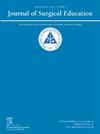Are Age, Sex, or Race and Ethnicity Associated With Performance on the OBGYN NBME Exam and Clerkship?
IF 2.6
3区 医学
Q1 EDUCATION, SCIENTIFIC DISCIPLINES
引用次数: 0
Abstract
OBJECTIVE
We sought to evaluate the association of demographic variables—sex, age, and race/ethnicity—on the OBGYN National Board of Medical Examiners (NBME) subject exam scores and clerkship final grades to identify potential disparities that could impact residency matches.
DESIGN
This retrospective study included 1550 students from a single medical school, spanning graduating classes from 2015 to 2024. Statistical analyses were conducted to examine differences in the OBGYN NBME scores and grades as a function of age, sex, ethnicity, and preclerkship performance.
SETTING
Uniformed Services University of Health Sciences
PARTICIPANTS
All clerkship level medical students (1550) over a 10 year period.
RESULTS
Results indicated that younger students performed better on the OBGYN NBME exam, with a negative correlation between age and NBME scores (r = -.15, p < 0.001). Women outperformed men on the NBME exam (d = 0.23) and had higher final OBGYN grades than men. Analysis by race and ethnicity showed that nonunderrepresented in medicine races and ethnicities (NUIM) scored significantly higher than underrepresented in medicine (UIM) on the NBME exam (d = 0.34). However, when controlling for preclerkship performance, no significant differences were observed between ethnic groups.
CONCLUSIONS
These findings highlight the need for residency programs to consider demographic influences on standardized test performance. Clerkship directors may need to evaluate grading rubrics and the weight given to NBME scores to ensure fair assessment and support for all students, particularly those from UIM backgrounds. Further research is needed to explore the underlying factors contributing to these disparities and to develop strategies to mitigate them.
求助全文
约1分钟内获得全文
求助全文
来源期刊

Journal of Surgical Education
EDUCATION, SCIENTIFIC DISCIPLINES-SURGERY
CiteScore
5.60
自引率
10.30%
发文量
261
审稿时长
48 days
期刊介绍:
The Journal of Surgical Education (JSE) is dedicated to advancing the field of surgical education through original research. The journal publishes research articles in all surgical disciplines on topics relative to the education of surgical students, residents, and fellows, as well as practicing surgeons. Our readers look to JSE for timely, innovative research findings from the international surgical education community. As the official journal of the Association of Program Directors in Surgery (APDS), JSE publishes the proceedings of the annual APDS meeting held during Surgery Education Week.
 求助内容:
求助内容: 应助结果提醒方式:
应助结果提醒方式:


